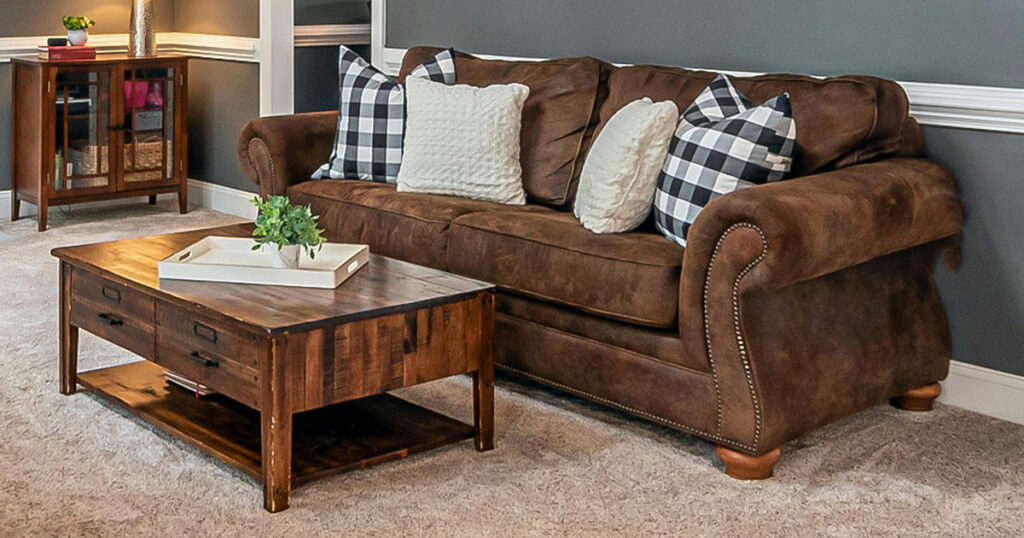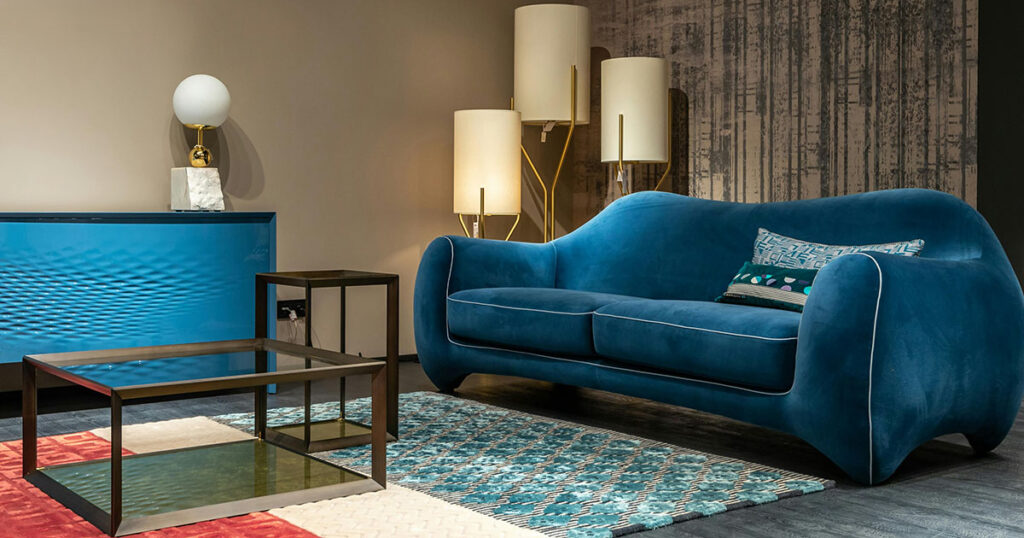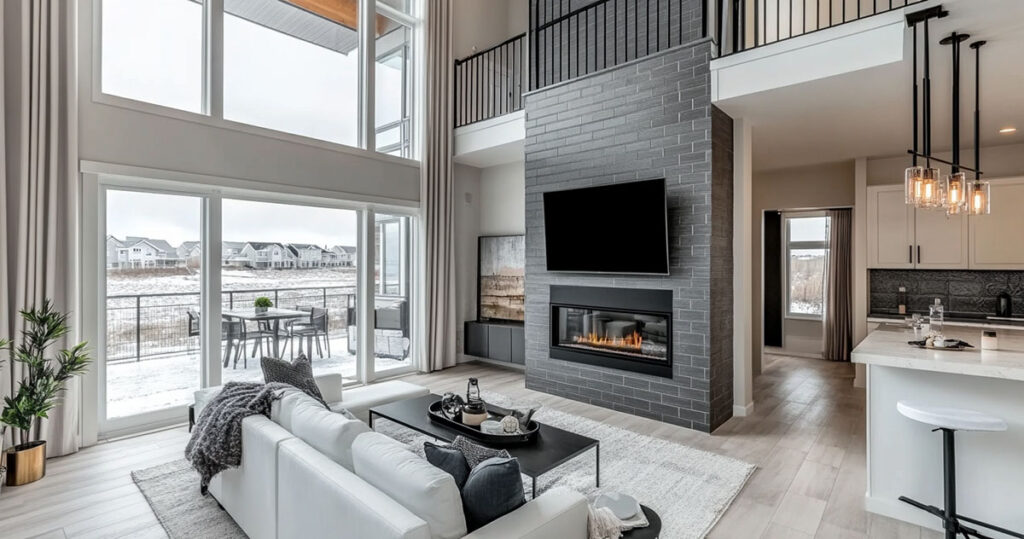Selecting the right rug for a Bohemian-style space can transform an ordinary room into a vibrant, personalized haven.
Whether you’re decorating your home or a commercial space, understanding how to choose rugs that complement Bohemian aesthetics will help you create spaces that feel both eclectic and cohesive.
What Makes Bohemian Interior Design Unique
Bohemian style (often called “boho”) celebrates individuality and creativity through rich patterns, varied textures, and cultural elements from around the world. Unlike more structured design approaches, boho embraces a free-spirited mix of elements that creates a lived-in, collected-over-time atmosphere.
Key Features of Bohemian Style
Bohemian interiors blend different cultures and eras, using furniture and decor from various periods and places. The style layers textiles generously, combining rugs, throws, pillows, and wall hangings for a cozy feel. Colors typically include warm earthy tones accented with vibrant pops of jewel colors, while patterns often draw inspiration from global traditions.
Natural elements play an important role, with plants and organic materials like wood, rattan, and natural fibers adding warmth. Above all, boho spaces feel personal and relaxed, showcasing treasures with meaning rather than following strict design rules.
Color Selection for Bohemian Rugs
The right rug colors can either tie your boho space together or serve as a stunning focal point.
Bohemian Color Palettes
Most Bohemian spaces use a mix of:
- Earthy base colors (terracotta, sandy beige, caramel brown, olive green)
- Deep jewel tones (emerald, sapphire, amethyst, ruby red)
- Soft pastels (dusty pink, lavender, sage, sky blue)
- Bright accent pops (turquoise, orange, hot pink)
Tips for Choosing Rug Colors
When selecting a rug for your boho space, decide whether you want it to complement or contrast with your existing decor. A rug that shares colors with other elements in the room will create a harmonious feeling. For example, in a living room with warm reds and browns, a rug containing those colors plus some navy will blend beautifully.
Alternatively, a contrasting rug can become a centerpiece that introduces new accent colors. If your boho bedroom features mostly whites and plants, adding a rug with vibrant pinks and blues creates a stunning focal point.
Don’t overlook neutral-colored rugs in Bohemian spaces. Jute, sisal, or wool rugs in natural tones can ground a room with colorful textiles and provide visual breathing room. A popular boho approach is layering a smaller vibrant rug on top of a larger neutral base.
For high-traffic areas or commercial spaces, consider rugs with darker base colors or busy patterns that help conceal dirt and stains. Rich, dark hues like navy, burgundy, or charcoal combined with multicolor patterns excel at hiding occasional spills.
Patterns That Enhance Bohemian Aesthetics
Patterns are essential to Bohemian style, with rugs offering the perfect canvas for these designs.
Global and Traditional Motifs
Many Bohemian-friendly rugs feature patterns inspired by global traditions:
- Persian floral and vine motifs
- Turkish or Moroccan geometric patterns (diamonds, medallions, zigzags)
- Tribal stripes or chevrons
- Indian-inspired paisleys or mandalas
These patterns carry a sense of history and craftsmanship that adds depth to your decor.
A classic Persian rug with its elaborate borders introduces immediate artistry, while a Moroccan kilim with bold geometric shapes brings a different but equally authentic boho vibe.
Mixing Patterns Successfully
One hallmark of boho decor is combining different patterns in the same space.
For visual harmony, vary the scale of patterns – if your rug has a busy, tight pattern, balance it with larger-scale patterns elsewhere in the room. This contrast in pattern size ensures each element has its moment without creating visual confusion.
For balance, include some solid-colored elements. If your rug features a bold pattern, consider using solid colors for large furniture pieces or nearby walls. This gives the eye some rest and allows the patterns to stand out rather than compete.
Rug Materials for Bohemian Spaces
The material of your rug affects its texture, durability, and feel underfoot – all important factors in bohemian design.
Natural Fibers
Wool rugs are a boho staple, particularly those with Persian or Moroccan influences. Wool takes dyes beautifully (creating those vibrant colors and patterns), feels soft, and offers natural durability and stain resistance. A thick wool Berber rug or hand-tufted dhurrie adds warmth and plushness perfect for casual gatherings.
Jute and sisal rugs bring an earthy, organic quality that complements the bohemian aesthetic. Their rougher texture contrasts nicely with softer fabrics, and they’re often more affordable than wool. A chunky braided jute rug makes an excellent base layer in a boho room, though keep in mind these natural fibers are less durable than wool and sensitive to moisture.
Cotton rugs offer softness and, for smaller sizes, the convenience of being machine-washable. Lightweight boho rugs in cotton or cotton blends work well for casual areas or layering, though they’re less durable than wool or synthetics over time.
Synthetic Options
For high-traffic areas or commercial spaces, consider synthetic rugs that mimic the look of natural fibers. Polypropylene rugs resist stains and moisture, making them ideal for busy areas, sunny spots, or even covered patios with boho decor. Nylon rugs also stand up well to abrasion and clean easily, making them suitable for commercial settings.
The benefit of synthetics is their durability, easy maintenance, and typically lower cost. While they may not have the same rich look as natural fibers, choosing one with a good pattern and layering it with other textiles can offset this.
Size and Placement for Maximum Impact
Choosing the right rug size and placement significantly influences how your Bohemian space feels and functions.
Living Spaces
In a Bohemian living room, use a large rug that can tuck under the front legs of your sofas and chairs to create a cohesive seating area. A generous rug gives you more canvas to display a beautiful boho pattern and helps define the conversation zone. If you have an open floor plan, use different rugs to establish distinct functional areas within the larger space.
For bedrooms, choose a rug large enough to extend around the sides of the bed, creating a soft landing for your feet and framing the bed visually. Under a dining table, ensure the rug is large enough that chairs remain on it even when pulled out.
Commercial Applications
In commercial settings like cafes or boutiques with a Bohemian theme, rugs help define areas and create a welcoming atmosphere. Use a large rug to anchor a seating cluster in a lobby or lounge, making it feel like a cozy waiting area. For retail spaces, consider using runners along displays or round rugs in corner sections with mirrors.
In all commercial applications, prioritize safety by ensuring rugs lie flat and are secured to prevent tripping. Consider using multiple smaller rugs rather than one large expensive rug, as smaller ones are easier to replace if damaged.
The Art of Layering Rugs
Layering rugs is a signature Bohemian technique that adds depth and textural interest to your space.
How to Layer Like a Pro
Start with a larger, neutral base rug – typically jute, sisal, or a subtly patterned piece. This foundation defines your area and provides an earthy backdrop. On top, add a smaller accent rug that’s more colorful or boldly patterned. This top layer could be a vintage kilim, a patterned wool rug, or even a small sheepskin.
For visual interest, contrast textures by pairing different materials – a shaggy rug atop a flat-woven piece, or a smooth cotton weave over a nubby jute. Allow the rugs to overlap casually rather than aligning them perfectly square. An asymmetrical arrangement looks more inviting and authentically bohemian.
When layering in commercial spaces, be strategic about placement to avoid creating tripping hazards. Restrict layered arrangements to lounge areas or display windows rather than walkways, and secure the layers with rug tape when possible.
Balancing Eclecticism with Cohesion
The challenge with Bohemian style is striking the right balance between eclectic variety and visual harmony.
Creating Harmony in Variety
While boho style embraces many colors and patterns, limiting your overall palette somewhat helps create cohesion. Choose a general color scheme for your room and ensure your rug includes at least some of these colors. This repetition forms visual connections between different elements.
Balance bold patterns with solid colors to give the eye places to rest. If your rug features an intricate pattern, choose solid colors for larger furniture pieces. Conversely, if your furniture and walls have strong patterns, consider a simpler rug to avoid overwhelming the space.
Pay attention to the visual weight of different elements in your room. A very colorful rug on one side might need balancing with colorful artwork or textiles elsewhere to distribute visual interest throughout the space.
Remember that bohemian spaces don’t need to be perfect. Sometimes the cohesion comes simply from your personal taste – if each piece reflects your style, a natural harmony often emerges. Trust your eye and refine the composition until it feels right to you.
Creating Zones and Setting Mood
Rugs do more than decorate – they help define space and establish atmosphere in both homes and commercial settings.
Defining Areas
In open-concept spaces, rugs act as invisible walls to create distinct functional zones. Place different rugs under the seating cluster, dining table, and bed to signal separate areas while maintaining a cohesive boho style throughout.
For commercial spaces like cafes or boutiques, rugs guide customer flow and create atmosphere. A bohemian coffee shop might use rugs in seating areas to make each section feel like its own cozy living room, enhancing the customer experience.
Setting the Mood
The colors and patterns of your rug significantly influence the ambience of a room.
For a peaceful, soothing mood in a yoga studio or bedroom, choose rugs in softer colors (creams, sages, faded blues) with gentle patterns. For vibrant, creative energy in a living room or office, select rugs with lively colors and bold designs that energize the space.
Texture also affects mood – thick, plush rugs create warmth and coziness, encouraging relaxation and lounging. Rougher or flatter rugs feel more grounded and connected to nature, perfect for dining areas or high-energy zones.
Conclusion
Selecting rugs for Bohemian-style spaces offers a wonderful opportunity to express creativity while creating functional, beautiful environments. By understanding the fundamentals of bohemian design and making thoughtful choices about color, pattern, material, and placement, you can create spaces that feel both eclectic and cohesive.
Remember that Bohemian style celebrates individuality, so trust your instincts and choose pieces that speak to you. A well-chosen rug can anchor your design, define your space, and transform an ordinary room into a vibrant bohemian sanctuary that tells your unique story.




